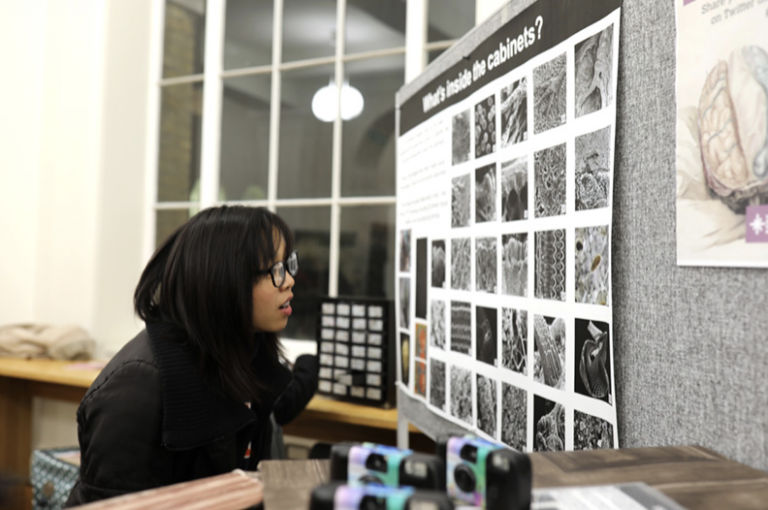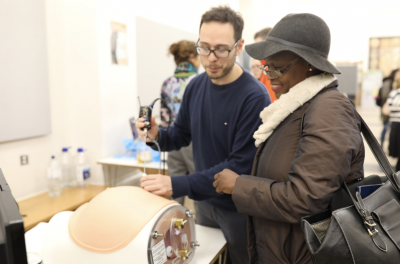Being Human 2018 ‘Exploring Under the Skin’: from the frightful to the fascinating
5 December 2018
Since the beginning of time, humans have strived to understand what we’re made of. Taking place last Wednesday in Wilkins Building, ‘Exploring Under the Skin’ was an interactive exploration of how humanities and science have intersected to answer this question.

There were plenty of activities for visitors to get stuck into - literally in the case of the Wellcome / EPSRC Centre for Interventional and Surgical Sciences (WEISS) stand, where people could try their hand at laparoscopic surgery. Other hands-on activities included an art history tour and a sketching table where people could create their own medical illustrations.

Dr Catherine James, a scientist and artist, showed off a beautiful array of medical imaging silk screen-prints. Using layers of historical x-rays, Catherine builds up multiple perspectives of the same anatomical object - resulting in a ghostly, three-dimensional image. The hazy artworks are a reminder of the blurred line between science and art.
In the UCL Art Museum, the sights were more grotesque. Visitors who weren’t too squeamish could check out the medical specimens on display as well as drawings by Charles Bell, a 19th-century Scottish surgeon, of his diseased patients. The centrepiece, however, was a 16th-century pop-up book, De humani corporis fabrica (‘On the fabric of the human body’), by Flemish anatomist, Andreas Vesalius. In an amazing intersection of art and science, Dr Sandy Mosse and Dr Dzoshun Shakir from WEISS used a foetal laparoscope to inspect under the flaps and find out how it was constructed.
At the end of the evening, there were talks from academics and artists about medical images. Dr Alexander Samson, Reader in Early Modern Studies, examined the taboo around looking inside our own bodies, and how artists from Durer to Rembrandt portrayed this in their works. Poet Liz Orton performed a reading about looking at medical images of her mother, mixing personal and scientific points of view. Finally, Dr Bill Maclehose, Lecturer in History and Philosophy of Science, explored how our brains were perceived in the mediaeval world, and how we’ve only just started to unlock its mysteries.
‘Exploring Under the Skin’ was part of Being Human, a national festival promoting public engagement with humanities research. Organised by the University of London’s School of Advanced Study in partnership with the Arts & Humanities Research Council and the British Council, Being Human events explore the big questions and ideas that affect humankind.
 Close
Close

